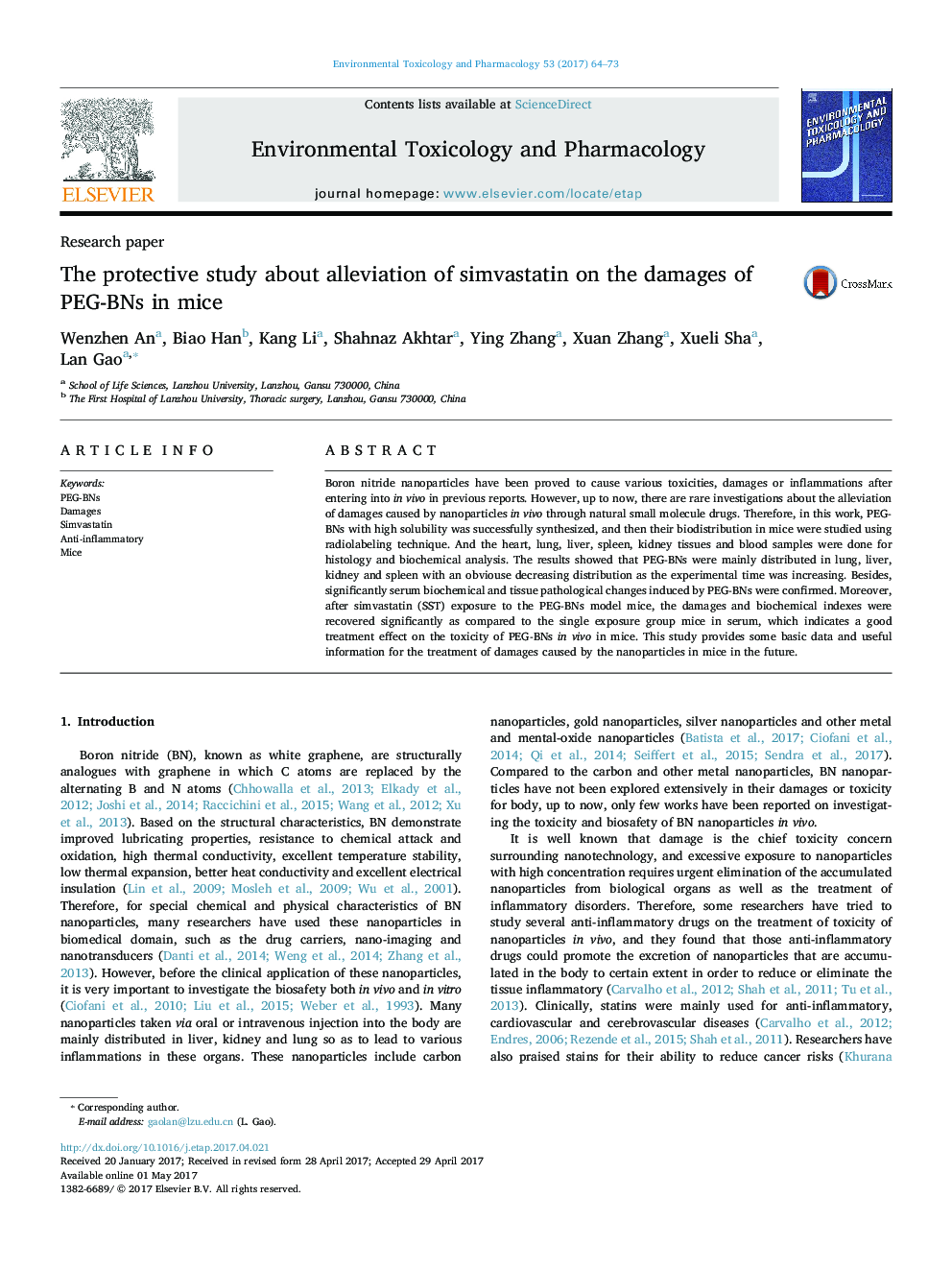| Article ID | Journal | Published Year | Pages | File Type |
|---|---|---|---|---|
| 5559831 | Environmental Toxicology and Pharmacology | 2017 | 10 Pages |
Abstract
Boron nitride nanoparticles have been proved to cause various toxicities, damages or inflammations after entering into in vivo in previous reports. However, up to now, there are rare investigations about the alleviation of damages caused by nanoparticles in vivo through natural small molecule drugs. Therefore, in this work, PEG-BNs with high solubility was successfully synthesized, and then their biodistribution in mice were studied using radiolabeling technique. And the heart, lung, liver, spleen, kidney tissues and blood samples were done for histology and biochemical analysis. The results showed that PEG-BNs were mainly distributed in lung, liver, kidney and spleen with an obviouse decreasing distribution as the experimental time was increasing. Besides, significantly serum biochemical and tissue pathological changes induced by PEG-BNs were confirmed. Moreover, after simvastatin (SST) exposure to the PEG-BNs model mice, the damages and biochemical indexes were recovered significantly as compared to the single exposure group mice in serum, which indicates a good treatment effect on the toxicity of PEG-BNs in vivo in mice. This study provides some basic data and useful information for the treatment of damages caused by the nanoparticles in mice in the future.
Related Topics
Life Sciences
Environmental Science
Health, Toxicology and Mutagenesis
Authors
Wenzhen An, Biao Han, Kang Li, Shahnaz Akhtar, Ying Zhang, Xuan Zhang, Xueli Sha, Lan Gao,
